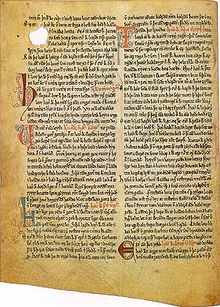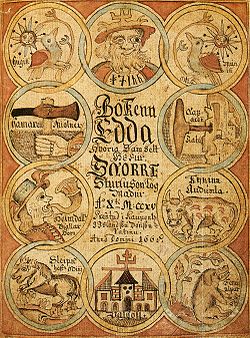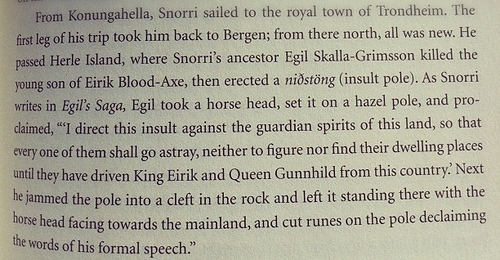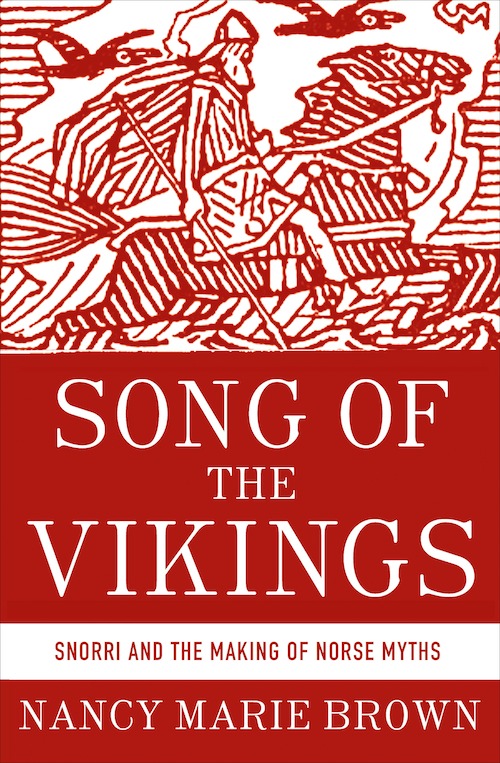I was interested when I heard there was a book coming out about Snorri Sturluson. As a roleplaying geek, knowing about Norse mythology is obligatory, but while I knew the name Snorri Sturluson in association with the Edda, I didn’t really have any context. That gap was enough for me to put Song of the Vikings on my “long list;” you know, the books you’ll get to, probably this year, but when you feel like it. When I saw that the book’s preface was about J.R.R. Tolkien arguing with C.S. Lewis, I moved it off my long list and to the top of my “short stack.” I was not disappointed; this book quite honestly rocks. Accessible enough to be read as a page turner, but rigorous enough to have some teeth, it hits the non-fiction sweet spot, not so readable as to be one of those trade non-fiction books dismissed as “a long magazine article” but not so academic as to become an impenetrable wall of text. Plus, vikings! Odin! Thor and Loki! Not to mention all the Snorri family drama you could ask for.
 Tolkien takes issue with Shakespeare, but mostly because Tolkien’s view of the supernatural is inconsistent with A Midsummer Night’s Dream. Now, I hesitate to criticize the venerable Professor, but I think there is room enough for a heterodox fantasy genre. Then again, I’m not trying to invent a legendarium for England out of whole cloth, either. What I do agree with, however, is that Snorri really ought to be taught more often; he definitely belongs in the same conversation as Homer. Homer really is a better comparison than Shakespeare for Snorri; both filter a vast body of mythology through a single author. There are differences, of course, which are essentially two-fold. The “Homeric Question”—did a real Homer exist? How close do the extant works match what he wrote?—is largely moot in Snorri’s case. He certainly did exist! Of course, Homer was writing from 800 to 500 BCE, while Snorri was alive from 1179 to 1241 CE.
Tolkien takes issue with Shakespeare, but mostly because Tolkien’s view of the supernatural is inconsistent with A Midsummer Night’s Dream. Now, I hesitate to criticize the venerable Professor, but I think there is room enough for a heterodox fantasy genre. Then again, I’m not trying to invent a legendarium for England out of whole cloth, either. What I do agree with, however, is that Snorri really ought to be taught more often; he definitely belongs in the same conversation as Homer. Homer really is a better comparison than Shakespeare for Snorri; both filter a vast body of mythology through a single author. There are differences, of course, which are essentially two-fold. The “Homeric Question”—did a real Homer exist? How close do the extant works match what he wrote?—is largely moot in Snorri’s case. He certainly did exist! Of course, Homer was writing from 800 to 500 BCE, while Snorri was alive from 1179 to 1241 CE.
 A larger question is one of original creation. The author of Song of the Vikings, Nancy Marie Brown, deals with some of what she considers Snorri’s contributions in “Seven Norse Myths We Wouldn’t Have Without Snorri” and “Seven Norse Myths We Wouldn’t Have Without Snorri, Part II,” and will continue to examine his works here. (As a brief aside, can I just say how great Tor.com’s readership is? The comments section of both of those posts are filled with a discussion of hermeneutics, which fills my cold black heart with glee.) Personally, I find it incredibly plausible that Snorri added his own flourishes and shaggy dog stories to his works; myth is already a soup of contradictory stories and convoluted canon, just like modern day comic books.
A larger question is one of original creation. The author of Song of the Vikings, Nancy Marie Brown, deals with some of what she considers Snorri’s contributions in “Seven Norse Myths We Wouldn’t Have Without Snorri” and “Seven Norse Myths We Wouldn’t Have Without Snorri, Part II,” and will continue to examine his works here. (As a brief aside, can I just say how great Tor.com’s readership is? The comments section of both of those posts are filled with a discussion of hermeneutics, which fills my cold black heart with glee.) Personally, I find it incredibly plausible that Snorri added his own flourishes and shaggy dog stories to his works; myth is already a soup of contradictory stories and convoluted canon, just like modern day comic books.
The raging fire of Múspelheim and the freezing ice of Niflheim at the heart of the creation myth in the Gylfaginning is a perfect case. Brown argues it more convincingly than I can—both in her post and in Song of the Vikings—but frankly the volcanic nature of Iceland and the tectonic stability of Scandinavia make the point all on their own. Did Snorri add it in, or did he crib from existing Icelandic versions of Norse mythology? I couldn’t tell you, but unless you can cite a source predating Snorri, I’m going to go with him. It is, at the very least, a strong hypothesis, and a falsifiable one, which means it is a good hypothesis, too.

Don’t be distracted by all that, though; if you are you might miss the fact that this book is both hilarious and bad-ass, because…well, because Vikings were both hilarious and bad-ass. For every Kveld-Ulf (the “Evening Wolf,” biggest, baddest dude and likely werewolf) you get an Eyestein Foul-Fart (whose, well, farts were the worst). Or then there is mention of the niðstöng or “insult pole,” where a horse’s head is set on a pole carved with runes insulting the spirits. Both ridiculous and scary, right? That sort of thing shows the dichotomy of Odin, which Snorri and Brown both keep returning to; a god beloved equally of poets and berserkers, a gallows god who finds Loki so funny they become blood brothers.
All of this is sort of talking around what the bulk of the book deals with: the life and times of Snorri Sturluson. Snorri isn’t a brave, bold viking; he belongs in the other camp, with the poets and the cunning tricksters. Born wealthy, his life arcs from there to becoming the “uncrowned king” of Iceland with ambitions to become something more, only to arc back down again to find him dying in his nightshirt, hiding in a basement from assassins, begging them “don’t strike!” Poetry battles, secret plots with kings and dukes, legal malfeasance, infidelity, seduction, illegitimate kids, grudges and feuds, family betrayal, religious condemnation and exaltation…his life story could provide grist for a soap opera mill. Or a Shakespeare play, come to think of it, again with all apologies to the right honorable Tolkien.
Mordicai Knode took that photo of the paragraph about the insult pole because he was so charmed by it when he read it that he just had to. You can follow more of his strange impulse postings on Tumblr and on Twitter
Mordicai Knode is a Macmillan employee.










